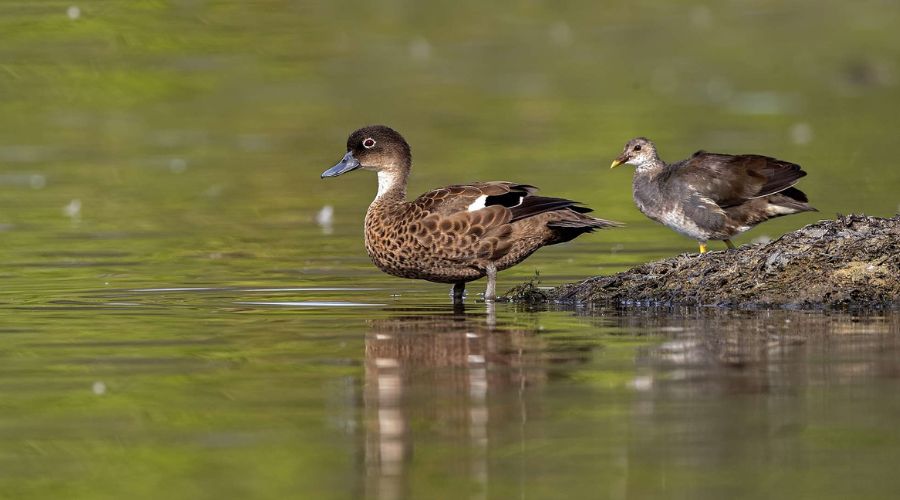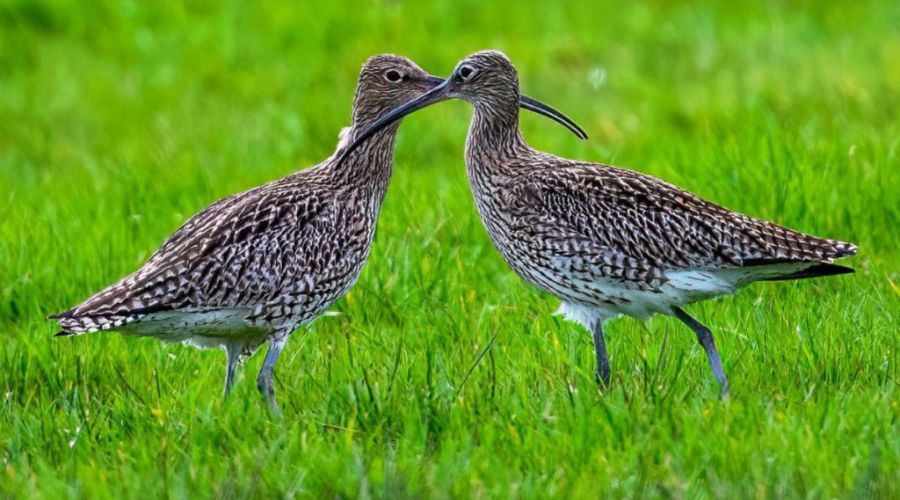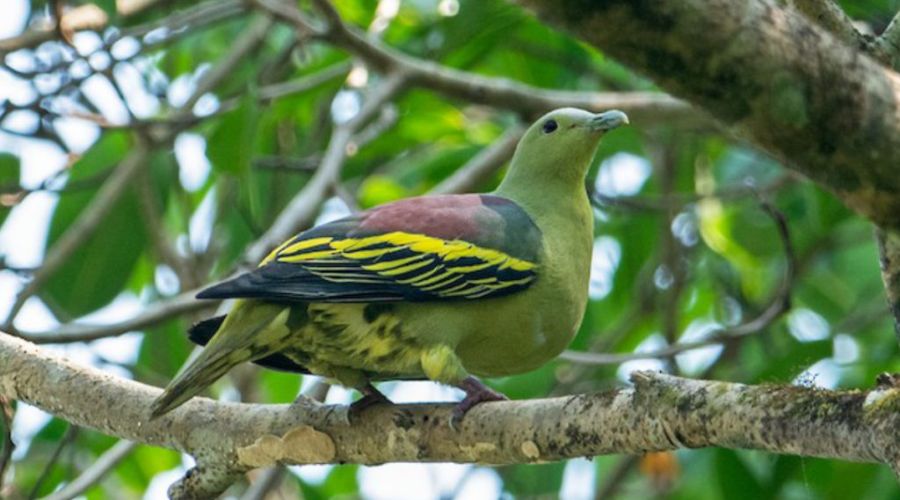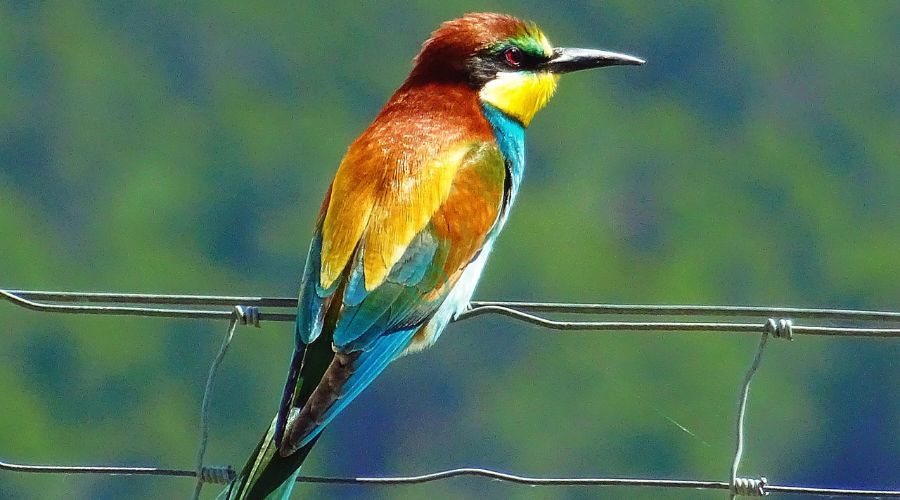Bird Watching in Andaman
The Andaman Islands are a haven for bird enthusiasts, boasting over 270 bird species, including around 40 species that are endemic to the region. The islands’ diverse ecosystems ranging from dense tropical rainforests to mangroves, coastal lagoons and wetlands create the perfect habitat for a wide variety of birds. Whether you’re an avid birdwatcher or a casual observer, the Andaman Islands offer a rich and rewarding birding experience.
Suggested Read: Best time to Visit Andaman and How to reach Andaman
Key Bird Species to be Spotted

Endemic Birds
Andaman Woodpecker, which is known for its striking black plumage with a red crest, Andaman Drongo, which is a glossy black bird with a distinctive forked tail, Andaman Serpent Eagle, which is a medium-sized raptor found in forested areas are some of the fascinating birds for watch. Nicobar Pigeon, a colourful bird with iridescent feathers, more commonly seen in the southern islands and Andaman Cuckoo-Dove, a shy, reddish-brown bird often spotted in dense forests are some other endemic birds that are striking.
Migratory Birds
The islands attract several migratory species, including waders, sandpipers and plovers, particularly during the winter months.
Water Birds
Egrets, herons and kingfishers are commonly seen near water bodies and mangroves. The Pacific Reef Heron and Grey Heron are popular sights.
Suggested read : Andaman tour packages
List of Birds in Andaman That Make Bird Watching Absolutely Fascinating

These birds promise to make your birding in the Andaman Islands a unique and memorable journey. You can expect to have a diverse and rewarding birding experience with such a variety of species.
There are about sixteen bird species endemic to the Andaman Islands and these are every bird watcher’s delight. Andaman Serpent-eagle (Spilornis elgini), Andaman Crake (Rallina canningi), Brown Coucal (Centropus andamanensis), Andaman Scops Owl (Otus balli), Hume’s Boobook (Ninox balli), Andaman Barn Owl (Tyto alba), Andaman Nightjar (Caprimulgus andamanicus), Narcondam Hornbill (Aceros narcondami), Andaman Woodpecker (Dryocopus hodgei), Andaman Drongo (Dicrurus andamanensis), Andaman Treepie (Dendrocitta bayleyi), Andaman Shama (Copsychus albiventris), Andaman Cuckooshrike (Coracina dobsoni), Andaman Flowerpecker (Dicaeum virescens), Andaman Cuckoo-dove (Macropygia rufipennis) and White-headed Starling (Sturnia erythropygia).
There are also eight other bird species that can be classified as endemic to the Nicobar Islands. These are Nicobar Scrubfowl (Megapodius nicobariensis), Nicobar Imperial-pigeon (Ducula nicobarica), South Nicobar Serpent-eagle (Spilornis minimus), Nicobar Sparrowhawk (Accipiter butleri), Nicobar Scops Owl (Otus alius), Nicobar Parakeet (Psittacula caniceps), Nicobar Bulbul (Hypsipetes nicobariensis) and Nicobar Jungle Flycatcher (Cyornis nicobaricus).
And, there are five bird species that are endemic to both the Andaman and Nicobar Islands. These can be identified as Andaman Woodpigeon (Columba palumboides), Andaman Green Pigeon (Treron chloropterus), Andaman Cuckoo-dove (Macropygia rufipennis), Andaman Boobook (Ninox affinis) and White-headed Starling (Sturnia erythropygia).
Some beautiful resident species that attract a lot of bird watchers can be named as Olive-backed Sunbird, Long-tailed Parakeet, White-breasted Woodswallow, Pacific Swallow, Freckle-breasted Woodpecker, Plume-toed Swiftlet, Walden’s Scops Owl and Ruddy Kingfisher.
Some known migratory species of birds that keep on making their presence felt in the Andaman and Nicobar regions and are the reasons for a lot of excitement for bird watchers are Chinese Egret, Violet Cuckoo, Himalayan Cuckoo, Ashy Minivet, Dusky Warbler, Arctic Warbler, Curlew Sandpiper, Broad-billed Sandpiper, Red-necked Stint, Yellow Bittern, Cinnamon Bittern and Red-throated Pipit. The range of endemic, resident and migratory bird species in the Andaman Islands is hugely diverse and will promise that your birding tour in the Andaman Islands is an exciting and satisfying experience.
Suggested read : Best time to visit andaman
Best Birdwatching Spots

Chidiya Tapu (Port Blair)
Known as the “Bird Island,” this spot is a favorite among bird watchers for spotting a variety of endemic and migratory species, especially during sunrise and sunset. Chidiya Tapu, also known as the “Bird Island,” is a prime destination for bird watching in the Andaman Islands. Located approximately 25 kilometers from Port Blair, this serene spot is surrounded by lush forests, mangroves and a tranquil coastline, offering a perfect habitat for both endemic and migratory bird species.
Birdwatchers visiting Chidiya Tapu can spot species such as the Andaman Drongo, Andaman Bulbul, White-throated Kingfisher and the striking Scarlet Minivet. The area is particularly lively during sunrise and sunset, when birds are most active. The dense vegetation also attracts various butterflies and other wildlife, making it a biodiversity hotspot. For the best experience, visitors are encouraged to bring binoculars and a field guide. The calm and undisturbed atmosphere at Chidiya Tapu makes it a must-visit for nature and bird enthusiasts.
Suggested read : Birdwatching in andaman
Mount Harriet National Park
The dense forests of Mount Harriet are home to numerous endemic species, making it a prime birdwatching location. Mount Harriet National Park, located in the South Andaman district, is one of the most sought-after destinations for bird watching in the Andaman Islands. Known for its lush tropical rainforests and diverse ecosystems, the park is home to a wide range of bird species, including many that are endemic to the region.
Birdwatchers can spot species like the Andaman Woodpecker, Andaman Serpent Eagle, Andaman Coucal and the vibrant Andaman Treepie. The park also provides excellent opportunities to see migratory birds and other forest-dwelling species. The dense vegetation, coupled with the serene environment, makes it an ideal spot for observing birds in their natural habitat. For an enriched experience, visitors are advised to carry binoculars, a field guide for identifying birds and a camera to capture the stunning wildlife. Hiring a local guide familiar with the area can enhance the birdwatching adventure and increase chances of spotting rare species.
Suggested read : Local life in andaman nicobar
Saddle Peak National Park in North Andaman
Trek through lush forests to spot unique bird species like the Andaman Bulbul and Andaman Hill Myna. Saddle Peak National Park, located in North Andaman, is a treasure trove for birdwatching enthusiasts. Encompassing the highest point in the Andaman and Nicobar Islands, this park offers diverse habitats, including evergreen forests, mangroves and coastal ecosystems, which attract a wide array of bird species.
Key bird species spotted here include the Andaman Wood Pigeon, Andaman Scops Owl, Andaman Hill Myna and the rare Edible-nest Swiftlet. The park’s rich biodiversity and untouched surroundings make it a haven for endemic and migratory birds.
Birdwatchers trekking through the park’s scenic trails often encounter flocks of colourful species flitting through the dense canopy. Early mornings are the best time to visit for bird activity. It is recommended to carry binoculars, a camera and sufficient water while exploring. A guided trek ensures you don’t miss out on spotting some of the more elusive bird species that call Saddle Peak their home.
Suggested read : Galathea national park
Rangat Mangroves in Middle Andaman
The mangrove boardwalk offers excellent opportunities to spot water birds and other species in their natural habitats. Rangat, located in Middle Andaman, is renowned for its serene Mangrove Forests, which offer an excellent habitat for a variety of bird species. The highlight of this area is the Mangrove Walkway, a well-maintained wooden pathway that meanders through the dense mangroves, providing bird enthusiasts with the perfect vantage point to observe avian life up close.
Birdwatchers can spot an array of species, including kingfishers, herons, egrets and various migratory shorebirds. The unique mangrove ecosystem also attracts rare species such as sandpipers, plovers and other wetland birds that thrive in this tranquil environment. The harmonious blend of forest and wetland creates a picturesque setting, perfect for birdwatching. The best times to visit are early mornings and late afternoons when bird activity is at its peak. Visitors are encouraged to carry binoculars and a camera to capture the vibrant birdlife. The peaceful ambiance of Rangat’s mangroves, combined with the abundance of bird species, makes it a must-visit spot for bird enthusiasts exploring the Andamans.
Suggested read : Fishing villages of andaman
Sippighat Agricultural Farm in Port Blair
This area, with its wetlands and farmlands, is ideal for spotting kingfishers, egrets and other wetland species. Sippighat Agricultural Farm, located approximately 15 kilometres from Port Blair, is a fantastic spot for bird watching in the Andaman Islands. Spread across sprawling wetlands and agricultural fields, this area attracts a wide range of bird species, making it a paradise for bird enthusiasts. The farm’s diverse ecosystem, including marshy lands and cultivated crops, provides the perfect environment for birds to thrive.
Birdwatchers can spot species like White-throated Kingfishers, Egrets, Purple Moorhens and Common Mynas. During the migratory season, the area becomes home to various waders and other water birds. The blend of open fields and nearby water sources makes it an ideal location for observing both resident and migratory birds.
To enjoy birdwatching at its best, visit early in the morning or late in the afternoon when birds are most active. Carry binoculars and a field guide to identify the species you encounter. Sippighat Agricultural Farm is a must-visit for anyone looking to explore the avian diversity of the Andaman Islands.
Suggested read : Best forest trails in andaman
Little Andaman
The island’s unspoiled forests and beaches attract rare and endemic bird species. Little Andaman, the fourth-largest island in the Andaman archipelago, is an emerging hotspot for birdwatching. Its pristine rainforests, mangroves and coastal ecosystems provide a rich habitat for diverse bird species, including many endemics and migratory birds. The island’s unspoiled natural environment makes it a haven for birdwatchers and nature enthusiasts alike.
Visitors to Little Andaman can spot species such as the Andaman Teal, Andaman Cuckoo Dove, Andaman Crake and the striking Nicobar Pigeon. The island is also home to several woodpeckers, kingfishers and herons, adding to its avian diversity. The mangrove-lined creeks and rainforest trails are particularly rewarding for those seeking rare bird sightings.
The best time to visit is early in the morning, as the forest comes alive with bird calls and activity. Carry binoculars, a camera and a bird identification guide for a fulfilling experience. A guided tour with local experts can enhance the chances of spotting elusive species, making Little Andaman a must-visit destination for birdwatching in the Andamans.
Suggested read : Submarine ride in andaman
Best Time for Bird Watching

The ideal time for bird watching in the Andaman Islands is between November and March. During these months, the weather is pleasant, with cooler temperatures and minimal rainfall, making it comfortable to explore the islands’ rich biodiversity. Additionally, this period coincides with the arrival of migratory birds, which enhances the birdwatching experience.
Early mornings and late afternoons are the best times of the day for birdwatching, as birds are most active during these hours. The cooler morning temperatures encourage feeding and vocal activity, providing better opportunities for spotting and listening to a variety of species. Carrying binoculars, a bird guidebook and a camera can enhance your experience.
Birdwatching Tips
- Carry Binoculars and a Field Guide: Essential for spotting and identifying different species.
- Wear Camouflage Clothing: Neutral colours help you blend into the environment.
- Visit Early Morning or Late Afternoon: Birds are most active during these times.
- Respect Nature: Avoid making loud noises and maintain a respectful distance to avoid disturbing the birds.
- Hire a Local Guide: Knowledgeable guides can enhance your experience by pointing out rare and hard-to-spot species.
The Andaman Islands’ untouched beauty and incredible bird diversity make it a paradise for birdwatching, offering unforgettable experiences in the lap of nature.

